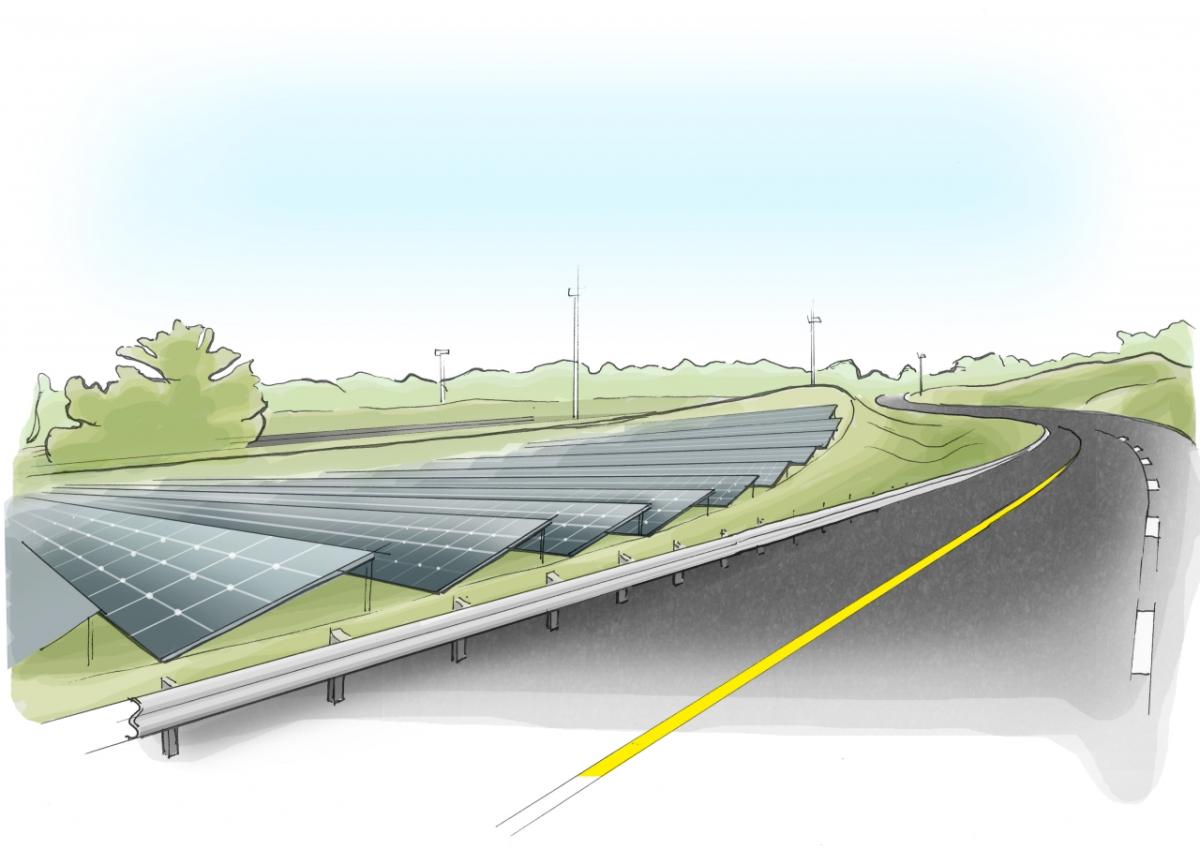Ecocentricity Blog: Miles of Opportunity on The Ray
Guest blog by Harriet Langford

Ecocentricity Blog: Miles of Opportunity on the Ray
Hello Ecocentricity readers! I’m so excited to have the opportunity to introduce The Ray in John’s absence. For those of you who are unfamiliar with me or The Ray, let me introduce myself. My name is Harriet Langford and I am Ray Anderson’s youngest daughter and John’s aunt. I am a trustee of the Ray C. Anderson Foundation and the president and founder of The Ray. If you’re reading this blog, you’re probably pretty familiar with the Foundation. Today, I want to introduce you to The Ray and then tell you about something I’m very excited about – the energy-transportation nexus.
So, briefly, what is The Ray? The Ray is an 18-mile corridor of interstate 85 running from the Alabama border up to LaGrange, Georgia. That stretch of highway is a living laboratory for the technology and innovations that will make driving safer and more sustainable. We’ve piloted the first drivable solar road, installed a first-of-its-kind drive through tire safety station, planted bioswales and pollinator gardens to naturally manage storm water run off and erosion challenges – and we’re just getting started. If you want to know more about The Ray and our projects, I encourage you to visit our website and follow us on Facebook, Twitter, Instagram, and LinkedIn. But for now, I want to turn to the energy-transportation nexus.
The US interstate highway system is the linchpin connecting our states and cities. Building it put Americans to work and changed our country. We celebrated the system as an efficient means of getting from point A to point B. Today, on closer examination, the road as a point of connectivity for drivers is only the starting point for its potential. The energy-transportation nexus is the concept of leveraging existing assets and infrastructure to produce more value and better outcomes in the transportation sector and is the key to diversifying state DOT revenue beyond unreliable congressional appropriations, tolling and the gas tax.
Renewable energy generation presents vast opportunities for the transportation industry. In December of 2016, The Ray and Georgia DOT installed a 50 square meter pilot of Wattway, a solar pavement, in an interstate access lane. This demonstration is the only publicly accessible, drivable solar road in the United States and generated over six-megawatt hours of clean, renewable energy in just one year for Georgia DOT’s operations.
Other staples of highway infrastructure have electrification potential. In December of 2017, The Ray released groundbreaking global research on solar noise barriers in conjunction with Innovia Technology, a UK-based innovation consultancy. This research dives deep into different designs, key technology providers, and innovators, as well as providing an in-depth cost-benefit analysis of noise barriers manufactured from photovoltaic materials that produce renewable energy, all while blocking highway noise pollution.
Even the land itself (called the right-of-way) can multi-task! This year, Georgia will deploy a one-megawatt solar farm in and along the shoulder of The Ray, following successful pilots in Oregon and Massachusetts. This one-megawatt installation will be the first of its kind in the southeast and the only pollinator-friendly highway solar in the country. For states where solar may not be the optimal renewable energy generator, advances in micro-turbine technology provide more renewable energy opportunities for transportation infrastructure that could multitask, like bridges and rail overpasses, even in low-wind regions.
So what do you think? Once we made the connection between energy production and transportation infrastructure, I haven’t been able to look at a highway the same way. Instead of miles of asphalt, I see miles of opportunity. And I can’t wait to bring the next renewable energy innovation to The Ray and to you.

